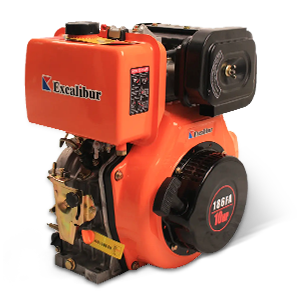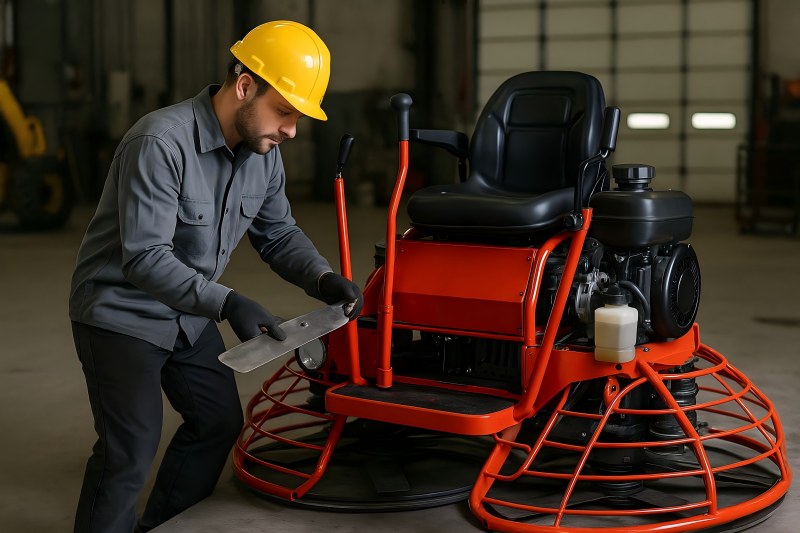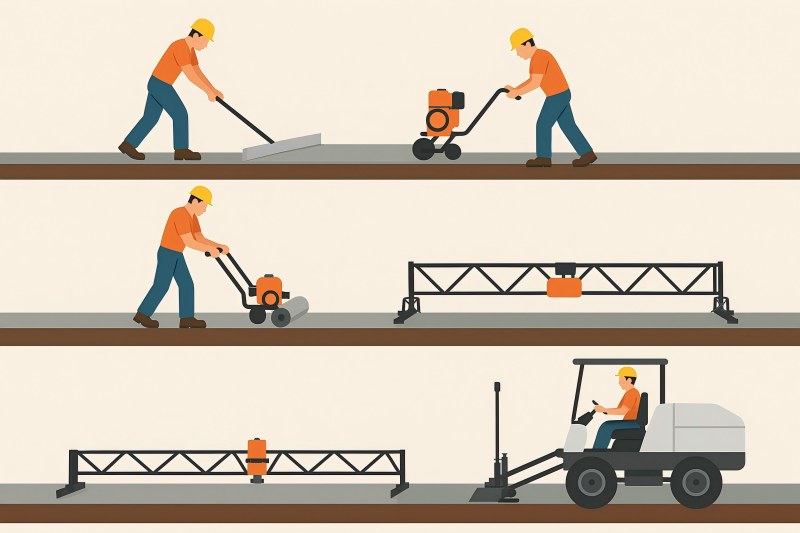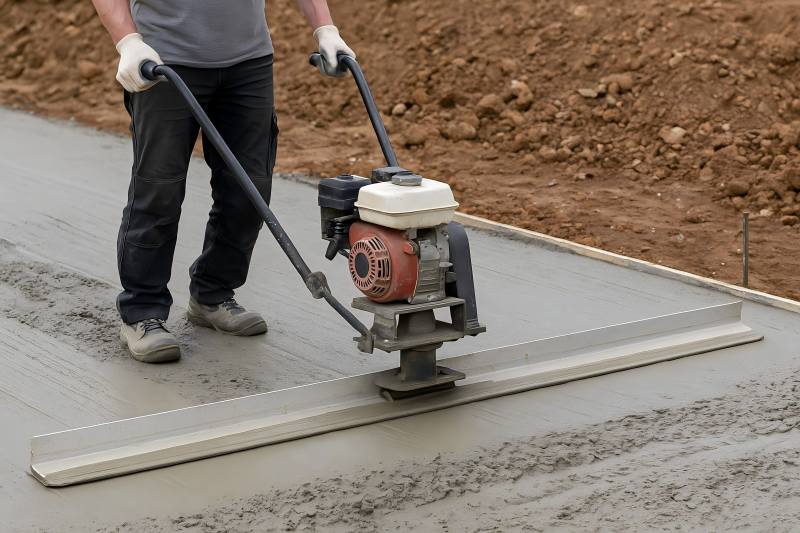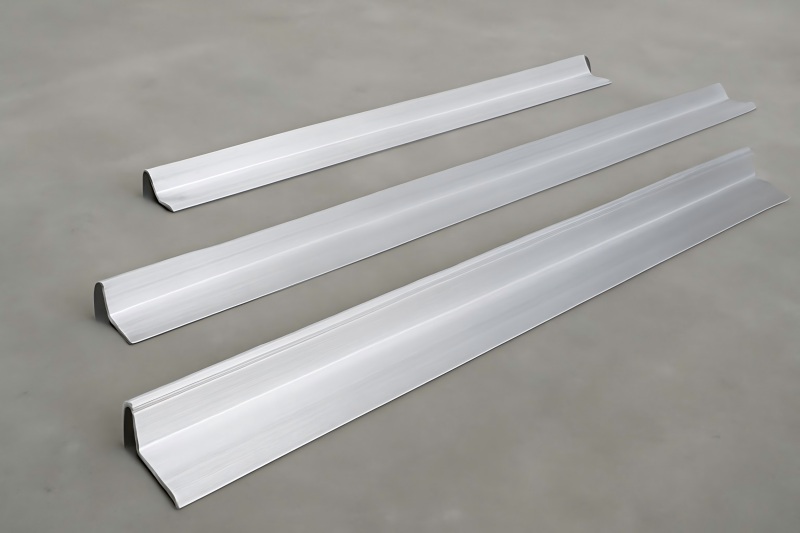Ride-on power trowels are essential machines for large-scale concrete finishing projects. They save time, reduce labor, and deliver smooth, level concrete surfaces across warehouses, highways, bridges, and industrial floors. Proper maintenance is vital to ensure performance and extend service life. Ignoring it accelerates wear and risks expensive repairs and project delays.
Importance of Maintenance in Ride-On Trowels
A ride-on trowel is built for tough conditions. It faces dust, vibration, high loads, and long hours of operation. Without maintenance, these conditions accelerate wear on the engine, blades, rotors, gearbox, and hydraulic system. Key benefits of maintenance include:
- Reduced Downtime: Preventive checks minimize unexpected failures during critical concreting jobs.
- Extended Service Life: Components last longer when properly lubricated, aligned, and inspected.
- Lower Operating Costs: Early detection of issues prevents expensive part replacements and repairs.
- Consistent Surface Quality: Well-maintained machines ensure flatness, smoothness, and professional finishes.
Daily Pre-Operation Checks
Operators must perform a quick but vital checklist before powering up the machine each day.
- Engine Oil Level: Check dipstick; add oil if below recommended level.
- Fuel System: Inspect fuel tank and lines carefully for leaks or damage. Use clean fuel to prevent injector clogging.
- Air Filter: Clean or replace if clogged. A blocked air filter reduces engine efficiency.
- Hydraulic Fluid Level: Ensure fluid is at the correct mark; low fluid leads to overheating and sluggish response.
- Cooling System: Inspect coolant levels and radiator fins for debris or leaks.
- Belts and Hoses: Inspect for cracks, wear, or looseness that might lead to sudden breakdowns.
- Blade Condition: Inspect for cracks, warping, or excessive wear. Replace if needed.
- Safety Features: Test emergency stop buttons, guard rings, and operator seat adjustments.
Performing these checks prevents small problems from turning into major failures.
Engine Care and Lubrication
The engine is the heart of a ride-on trowel. Whether gasoline or diesel powered, proper engine maintenance ensures uninterrupted performance.
- Oil Changes: Replace engine oil and filters according to manufacturer intervals (typically every 100–200 hours). Use only recommended oil grades.
- Spark Plugs or Injectors: Clean or replace spark plugs in gasoline engines and check injector performance in diesel engines. Poor ignition reduces efficiency.
- Lubrication: Regularly grease bearings, pivot points, and rotor assemblies to minimize friction and wear. Avoid over-greasing, as it may draw in dust and debris.
- Exhaust System: Inspect for debris or faults that could hinder airflow and decrease engine efficiency.
Blade and Rotor Assembly Maintenance
The blades and rotors directly affect the finish of the concrete. Worn or misaligned blades compromise quality.
- Blade Wear: Inspect regularly and replace when edges round off. Dull blades drag across surfaces rather than polishing.
- Blade Pitch Control: Ensure pitch adjustment levers are calibrated and smooth to operate.
- Rotor Balance: Check rotor assemblies for balance. Imbalance causes vibration, operator fatigue, and faster wear on bearings.
- Fasteners: Tighten all bolts and nuts on blade arms and rotor mounts to prevent loosening during operation.
Replacing blades at the right time is cheaper than redoing a poorly finished floor.
Hydraulic System Maintenance
Most modern ride-on power trowels use hydraulic drives for smooth and responsive control. The hydraulic system requires special care:
- Fluid Checks: Maintain proper fluid level and replace according to manufacturer schedule.
- Leak Inspection: Look for leaks at hoses, fittings, and cylinders. Small leaks can escalate quickly under pressure.
- Filter Replacement: Hydraulic filters must be replaced periodically to prevent contamination.
- Overheating Prevention: Clean hydraulic oil coolers regularly to prevent overheating issues.
Hydraulic failure is one of the costliest breakdowns. Preventive care keeps the system reliable.
Gearbox and Transmission
The gearbox delivers engine power directly to the blades. If neglected, it can seize up and cause total shutdown.
- Oil Level: Check and change gearbox oil regularly.
- Noise and Vibration:Unusual sounds may point to gear wear or bearing damage, so listen carefully.
- Alignment: Ensure shafts and couplings are aligned to avoid premature wear.
Fuel System and Air Filtration
Concrete sites are dusty environments.Engines suffer most from dust and debris.
- Fuel Quality:Use only clean fuel, as contaminated fuel can harm injectors and carburetors.
- Filters: Change fuel filters often to avoid blockages.
- Air Cleaner: Clean or replace air filters often in dusty areas; clogged filters reduce efficiency and fuel.
Electrical and Control Systems
Modern ride-on trowels often include electric starters, lighting, and electronic blade pitch controls.
- Battery Check: Inspect terminals for corrosion and ensure batteries are charged.
- Wiring: Secure loose wires and check for insulation damage.
- Switches and Levers: Test all control switches, including throttle and blade pitch. Smooth and responsive controls ensure operator safety.
Cleaning and Storage
Dust, cement, and debris accumulate quickly on a job site. Proper cleaning and storage extend machine life.
- Daily Cleaning: Wash off cement residues with water before they harden. Avoid high-pressure sprays near sensitive components.
- Protective Covers: Cover the machine to protect it from sunlight and rain whenever not actively in use.
- Storage Location: Keep the machine in a sheltered, dry location to avoid corrosion, moisture damage, and rust.
Scheduled Maintenance Intervals
Beyond daily checks, follow scheduled maintenance intervals based on machine hours:
- Every 50 Hours: Check belts, hoses, and grease fittings.
- Every 100 Hours: Replace engine oil and filter. Inspect blade pitch system.
- Every 250 Hours: Inspect hydraulic system, gearbox, and cooling system.
- Every 500 Hours: Major inspection of engine, rotors, transmission, and bearings. Replace worn parts.
Always maintain a logbook of service activities for accountability and better planning.
Operator Training and Best Practices
Even the best maintenance program fails if operators misuse the machine.
- Proper Operation: Do not overload the trowel or operate it at unnecessarily high rotational speeds.
- Warm-Up and Cool-Down: Let the engine warm before starting and cool after shutdown to ensure long-lasting performance.
- Smooth Maneuvering: Jerky movements stress the drivetrain and blades. Smooth steering and pitch adjustments reduce wear.
- Avoid Standing Cement: Do not allow cement to build up around the blades and guard ring. This adds stress and causes imbalance.
Well-trained operators are as important as maintenance crews.
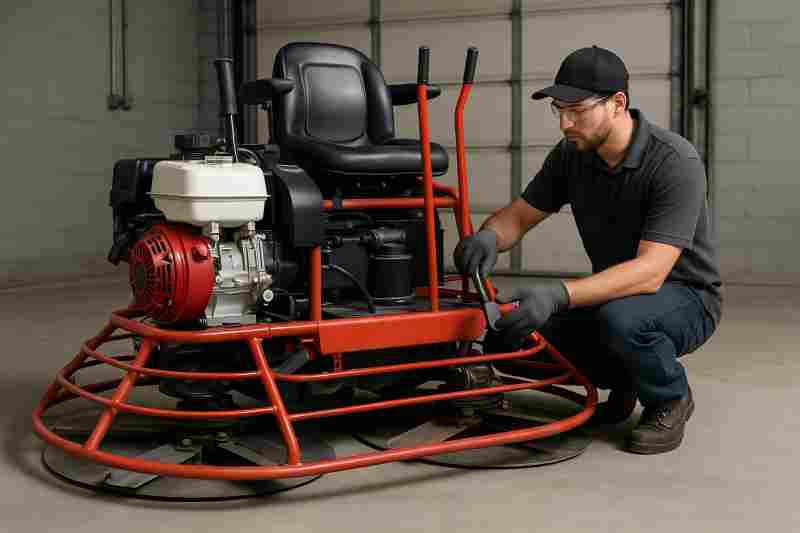
Common Mistakes to Avoid
- Ignoring Small Leaks: Minor oil or hydraulic leaks worsen over time and damage components.
- Skipping Inspections: Assuming the machine is fine without checks leads to sudden breakdowns.
- Improper Lubrication: Both under-lubrication and over-lubrication can damage parts.
- Using Wrong Parts: Cheap or incompatible spare parts reduce reliability and void warranties.
Cut Costs With Preventive Maintenance
Regular maintenance costs upfront but saves more long-term. For example:
| Maintenance Task | Cost (USD) | Potential Failure if Ignored | Replacement Cost (USD) |
| Blade Replacement | $100–$200 | Poor finish, rework needed | $5,000+ in rework costs |
| Oil Change | $50–$100 | Engine seizure | $2,000–$4,000 |
| Hydraulic Filter | $30–$60 | Pump failure | $1,500–$3,000 |
| Gearbox Oil | $80–$120 | Gearbox replacement | $2,500+ |
Preventive maintenance reduces total cost of ownership by up to 30%.
Manufacturer Support and Service
As a manufacturer, we recommend purchasing genuine parts and relying on authorized service centers. Genuine parts are tested for durability and designed to work seamlessly with your trowel. Routine servicing by trained technicians further enhances machine reliability.
A ride-on trowel is a significant investment for any construction company. Proper maintenance ensures that this investment delivers maximum returns by extending machine life, reducing breakdowns, and maintaining high-quality concrete finishes. From daily checks and lubrication to blade inspections and operator training, every step contributes to better performance and cost savings.
By adopting these maintenance tips, contractors can confidently rely on their ride-on trowels to perform smoothly across countless projects—delivering both durability and superior surface finishes.

